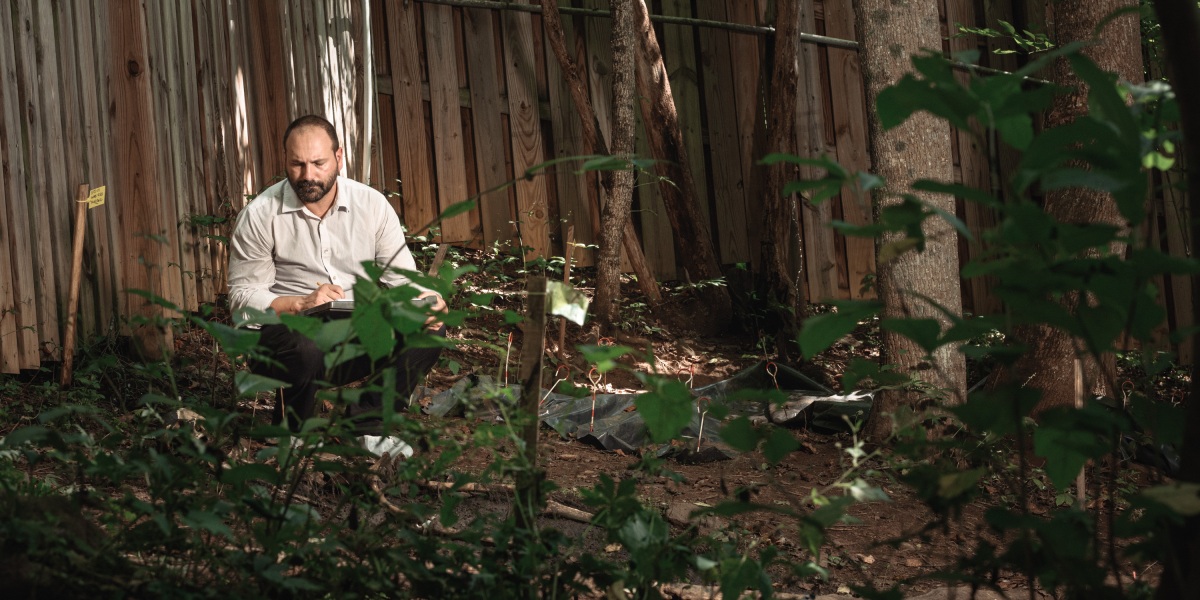
Rebecca George doesn’t mind the vultures that complain from the trees that surround the Western Carolina University body farm. Her arrival has interrupted their breakfast. George studies human decomposition, and part of decomposing is becoming food. Scavengers are welcome.
George, a forensic anthropologist, places the body of a donor in the Forensic Osteology Research Station—known as the FOREST. This is Enclosure One, where donors decompose naturally above ground. Nearby is Enclosure Two, where researchers study bodies that have been buried in soil. She is the facility’s curator, and monitors the donors—sometimes for years—as they become nothing but bones.
In the US, about 20,000 people or their families donate their bodies to scientific research and education each year. Whatever the reason, the decision becomes a gift. Western Carolina’s FOREST is among the places where watchful caretakers know that the dead and the living are deeply connected, and the way you treat the first reflects how you treat the second. Read the full story.
—Abby Ohlheiser
We’re excited to share this first piece from our forthcoming mortality-themed issue, available from 26 October. If you want to read it when it comes out, you can subscribe to MIT Technology Review for as little as $80 a year.
Climate action is gaining momentum. So are the disasters.
In recent months, we’ve witnessed stunning progress on climate action—and terrifying signs of the dangers we’ve unleashed.
The US finally stepped up as a leader in climate action, enacting a trio of major laws that could add up to the largest federal investment ever into climate and clean-energy technologies, and renewables, electric vehicles, and meat alternatives are now competitive mainstream options.
But in so many other ways, we are getting started tragically, disastrously, unforgivably late. While we’re setting ourselves up to make faster progress in the future, the measure that matters most has continued to rise: global emissions reached their highest level ever in 2021. So we have to redouble our efforts to accelerate emissions reductions—and fast. Read the full story.
This essay is an extended version of the opening talk that James Temple will deliver this morning at ClimateTech, MIT Technology Review’s inaugural climate and energy conference running today and tomorrow. Register for last-minute tickets and follow along with the latest updates on our liveblog.
The mothers of Mexico’s missing use social media to search for mass graves



